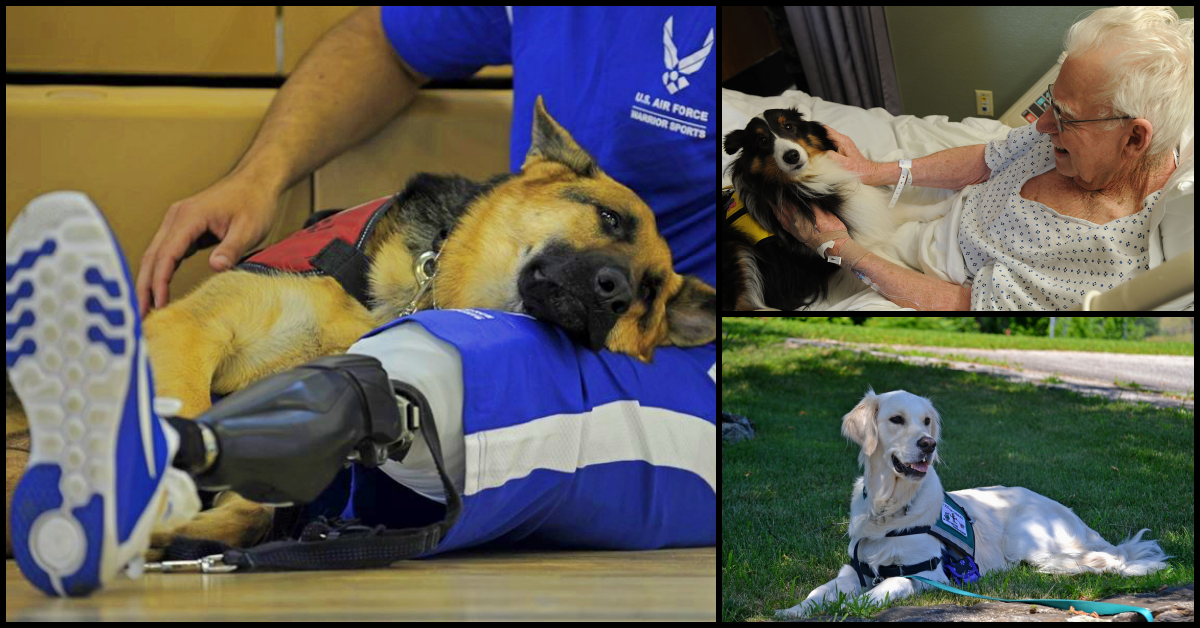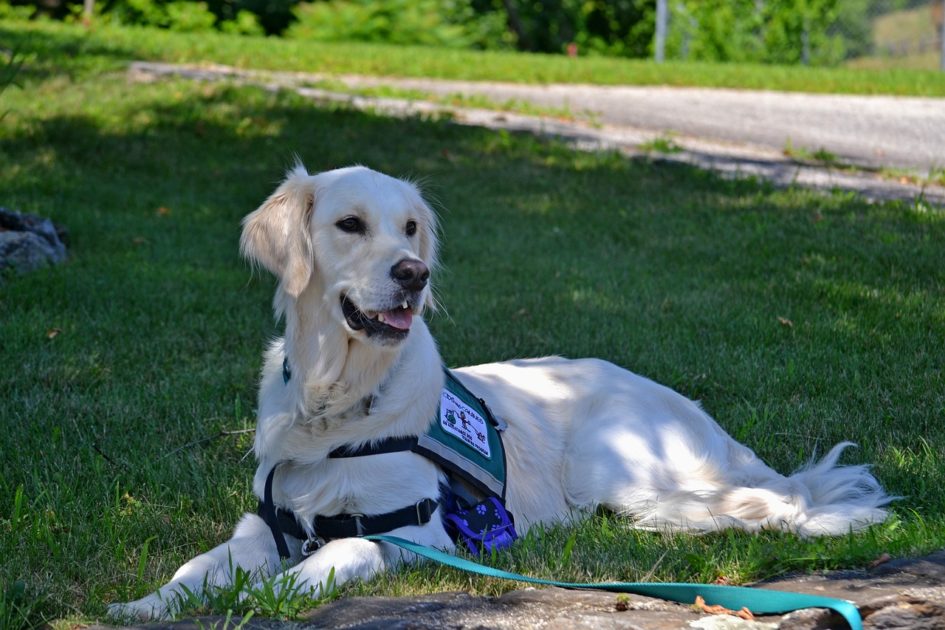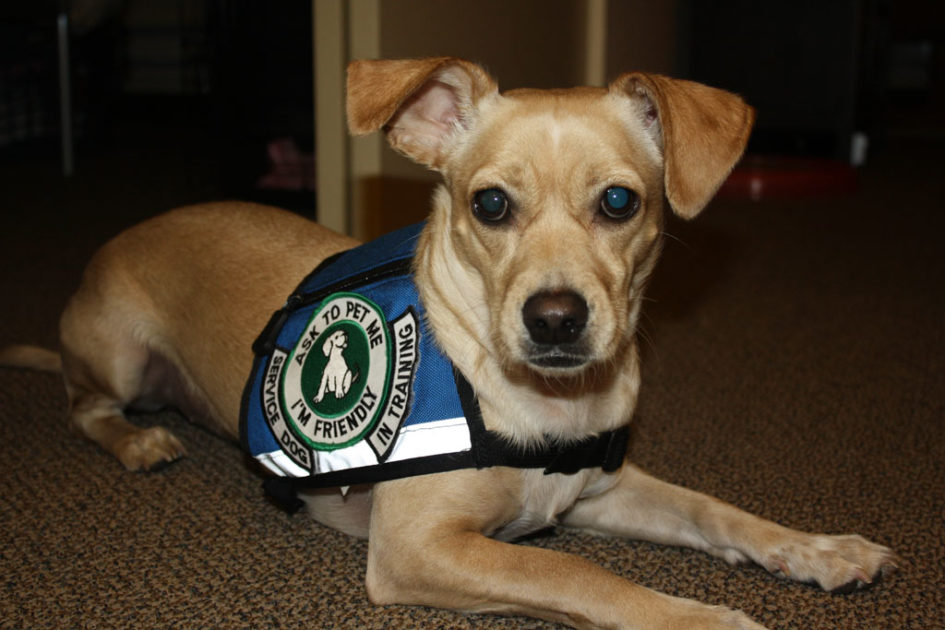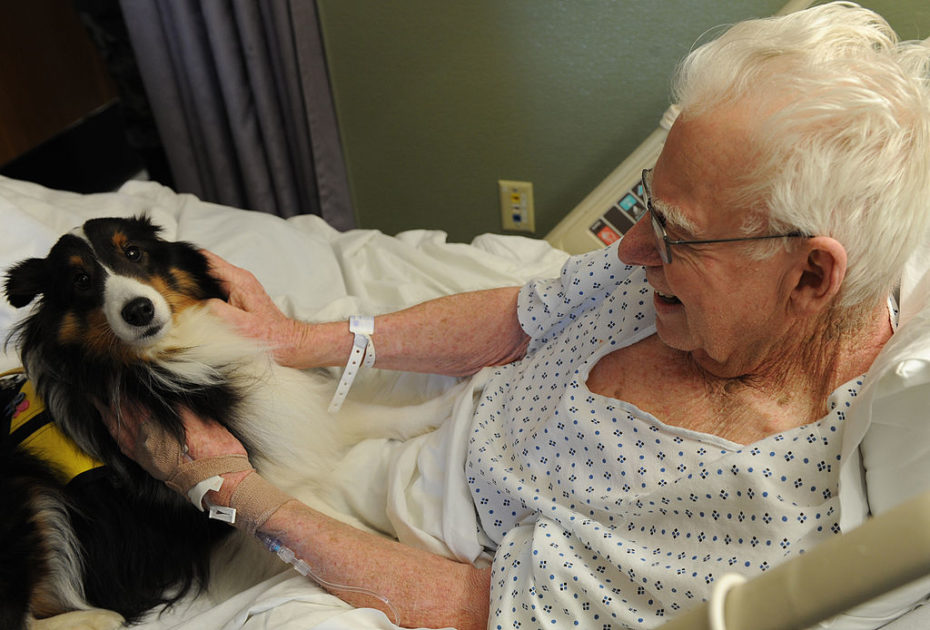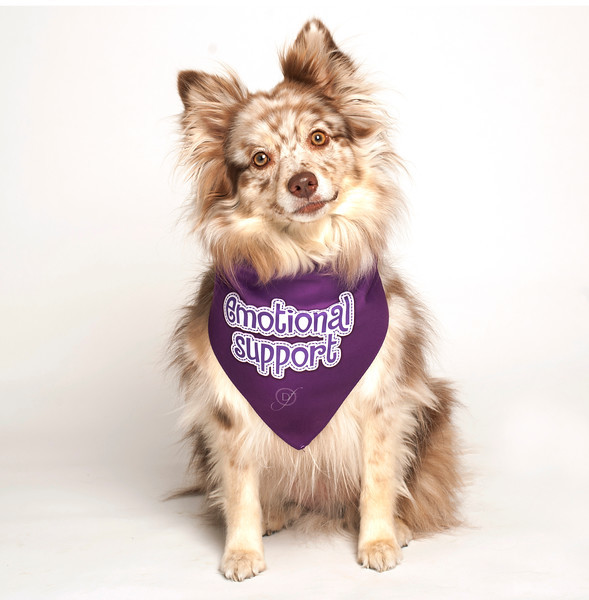All across the world, people with disabilities and diseases rely on dogs for support. There are separate classifications that are used to define service dogs, therapy dogs, and emotional support animals, and they are all quite different. Many dogs require extensive training while others are already pets that exhibit certain qualities that are helpful to their humans.
Dogs are amazing animals. They can offer a service and companionship. They have the ability to make their human feel loved and safe.
Do you know the differences between service dogs, therapy dogs, and emotional support animals? Many don’t. Read on to learn more about what distinguishes one from another.
Service Dogs
Meet Huey! He is a service dog for his human, John, who is legally blind and deaf in one ear. John needs help navigating around his home as well as in public areas. Many things can pose a threat but with Huey at John’s side, he can alert John and steer him away from danger. Huey spent an entire year in training and still goes to refresher courses every month.
Huey should NOT be pet by others. He’s in constant work mode and any distraction can harm his human.
The law doesn’t require service animals to wear a special vest, however, most do. When a service animal is without a vest, it is okay to ask if he or she is a service animal and what task he or she performs. But that is it. The laws are very clear and are there to protect the disabled individual and their privacy.
According to the ADA (Americans With Disabilities Act):
“Service animals are defined as dogs that are individually trained to do work or perform tasks for people with disabilities. Examples of such work or tasks include guiding people who are blind, alerting people who are deaf, pulling a wheelchair, alerting and protecting a person who is having a seizure, reminding a person with mental illness to take prescribed medications, calming a person with Post Traumatic Stress Disorder (PTSD) during an anxiety attack, or performing other duties. Service animals are working animals, not pets. The work or task a dog has been trained to provide must be directly related to the person’s disability. Dogs whose sole function is to provide comfort or emotional support do not qualify as service animals under the ADA.”
Service dogs are allowed in public buildings and establishments. Laws prohibit businesses from asking a service dog to remain outside. Much to many people’s surprise, service dogs are also welcome in restaurants and grocery stores.
All across the world, people with disabilities and diseases rely on dogs for support. There are separate classifications that are used to define service dogs, therapy dogs, and emotional support animals, and they are all quite different. Many dogs require extensive training while others are already pets that exhibit certain qualities that are helpful to their humans.
Dogs are amazing animals. They can offer a service and companionship. They have the ability to make their human feel loved and safe.
Do you know the differences between service dogs, therapy dogs, and emotional support animals? Many don’t. Read on to learn more about what distinguishes one from another.
Service Dogs
Meet Huey! He is a service dog for his human, John, who is legally blind and deaf in one ear. John needs help navigating around his home as well as in public areas. Many things can pose a threat but with Huey at John’s side, he can alert John and steer him away from danger. Huey spent an entire year in training and still goes to refresher courses every month.
Huey should NOT be pet by others. He’s in constant work mode and any distraction can harm his human.
The law doesn’t require service animals to wear a special vest, however, most do. When a service animal is without a vest, it is okay to ask if he or she is a service animal and what task he or she performs. But that is it. The laws are very clear and are there to protect the disabled individual and their privacy.
According to the ADA (Americans With Disabilities Act):
“Service animals are defined as dogs that are individually trained to do work or perform tasks for people with disabilities. Examples of such work or tasks include guiding people who are blind, alerting people who are deaf, pulling a wheelchair, alerting and protecting a person who is having a seizure, reminding a person with mental illness to take prescribed medications, calming a person with Post Traumatic Stress Disorder (PTSD) during an anxiety attack, or performing other duties. Service animals are working animals, not pets. The work or task a dog has been trained to provide must be directly related to the person’s disability. Dogs whose sole function is to provide comfort or emotional support do not qualify as service animals under the ADA.”
Service dogs are allowed in public buildings and establishments. Laws prohibit businesses from asking a service dog to remain outside. Much to many people’s surprise, service dogs are also welcome in restaurants and grocery stores.
Few have an issue with service dogs being in public restaurants and eateries, but it happens. Like with this individual:
“Under the ADA, State and local governments, businesses, and nonprofit organizations that serve the public generally must allow service animals to accompany people with disabilities in all areas of the facility where the public is normally allowed to go. For example, in a hospital, it would be inappropriate to exclude a service animal from areas such as patient rooms, clinics, cafeterias, or examination rooms. However, it may be appropriate to exclude a service animal from operating rooms or burn units where the animal’s presence may compromise a sterile environment.”
Service Dogs In Training
Meet Daisy! She is a service dog in training that is learning to be a seizure alert dog. She will become an official service dog once her training is complete and she’s able to perform all of her tasks successfully.
She will then go on to become a service dog for a child or adult that suffers from epilepsy. Many seizure alert dogs can “smell” chemical changes in their humans’ bodies and alert them 10-20 minutes prior to an impending seizure. That human can then get to a safe place and take the required medication.
Similarly to service dogs, service dogs in training are LEARNING to perform lifesaving tasks to aid their human. They often work with organizations who have special trainers. They will also work with the individual they will be assigned to as their training progresses, to establish a bond.
Service dogs in training are not protected as much by the laws outlined by the ADA, however, most state and local laws will cover these dogs as well. A successfully trained service dog has to start out as a trainee and if that dog isn’t exposed to public areas, he or she will never understand how to properly navigate them.
Therapy Dogs
Meet Frida, she is a therapy dog that visits the local hospital 3 times a week. She will go into patients’ rooms and sit with them. Many patients find that petting Frida and feeling her calming energy actually promotes healing.
Therapy dogs, and therapy animals, are also specifically trained to perform a special task. Unlike service dogs, therapy dogs are taught to be generally social so they are suited to go into hospitals, hospices, nursing homes, and schools where they provide psychological and physiological healing.
Therapy animals are calming in nature and help people who are in physical pain as well as those who are emotionally and mentally overwhelmed. Many are suffering from life-threatening illnesses and therapy dogs (and animals) are a wonderful distraction from their daily challenges.
Here’s a wonderful video about a little boy and his favorite four-legged visitor:
Emotional Support Dogs
Meet Gabbie. She’s an emotional support dog. Her human, Mona, suffers from depression and anxiety. Gabbie is always there to make Mona feel loved and supported. Gabbie lends a paw whenever Mona needs a friend. She calms Mona down when she has anxiety attacks by lying on her lap and letting Mona stroke her fur for as long as she wants. Gabbie also gives the best kisses.
Emotional support and therapy animals are not protected under the ADA the same way service animals are. However, most state and local governments have their own laws and exceptions. Since this is a large grey area– a dog that can help his human during a severe panic attack in public by shortening the severity of the event or stopping it altogether through emotional support versus a dog who can alert his human to an impending panic attack and bring his human medicine– many argue (and agree) that both services are equally essential and should be covered by a broader law.
Here, in the video below, Alyssa talks about Jasper, her emotional support dog. Jasper has given her back her life. Before him, she was hardly able to function or get out of bed due to depression and severe anxiety attacks. Now she’s enrolled in college fulltime!
ALL dogs– whether they are a pet, a service dog, a therapy dog or an emotional support animal– are amazing. They rarely, if ever, think of themselves first. Do you have a support animal? Tell us all about him/her in the comment section ❤🐶
Feature image courtesy of U.S. Air Force

